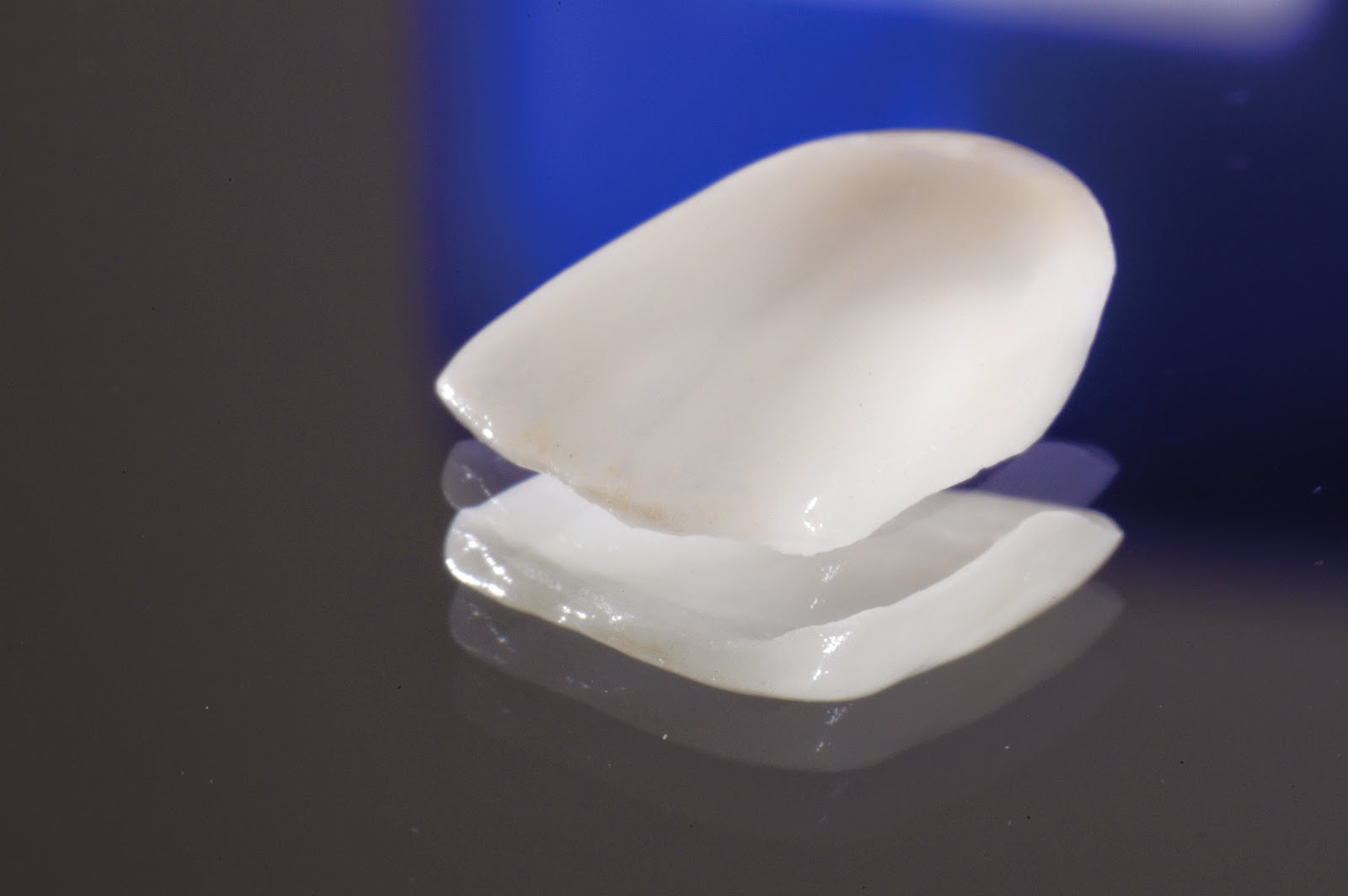iklan 2
Advantages and Disadvantages of Dental Material
 |
| Dental Material |
PORCELAIN (CERAMIC)
 |
| Dental Veneer (Ceramic) |
Advantages and disadvantages of dental material-Porcelain is a glass-like material formed
into fillings or crowns using models of the prepared teeth. The material is
tooth-colored and is used in inlays, veneers, crowns and fixed bridges.
Advantages
- Very little tooth needs to be removed for use as a veneer; more tooth needs to be removed for a crown because its strength is related to its bulk (size)
- Good resistance to further decay if the restoration fits well
- Is resistant to surface wear but can cause some wear on opposing teeth
- Resists leakage because it can be shaped for a very accurate fit
- The material does not cause tooth sensitivity
Disadvantages
- Material is brittle and can break under biting forces
- May not be recommended for molar teeth
- Higher cost because it requires at least two office visits and laboratory services
NICKEL OR COBALTCHROME
ALLOYS
Nickel or cobalt-chrome
alloys are mixtures of nickel and chromium. They are a dark silver metal color
and are used for crowns and fixed bridges and most partial denture frameworks.
Advantages
- Good resistance to further decay if the restoration fits well
- Excellent durability; does not fracture under stress
- Does not corrode in the mouth
- Minimal amount of tooth needs to be removed
- Resists leakage because it can be shaped for a very accurate fit
Disadvantages
- Is not tooth colored; alloy is a dark silver metal color
- Conducts heat and cold; may irritate sensitive teeth
- Can be abrasive to opposing teeth
- High cost; requires at least two office visits and laboratory service
- Slightly higher wear to opposing teeth
GLASS IONOMER CEMENT
 |
| GIC |
Glass ionomer cement is a
self-hardening mixture of glass and organic acid. It is tooth-colored and
varies in translucency. Glass ionomer is usually used for small fillings,
cementing metal and porcelain/metal crowns, liners, and temporary restorations.
Advantages
ü Reasonably good esthetics
ü May provide some help
against decay because it releases fluoride
ü Minimal amount of tooth
needs to be removed and it bonds well to both the enamel and the dentin beneath
the enamel
ü Material has low incidence
of producing tooth sensitivity
ü Usually completed in one
dental visit
Disadvantages
ü
Cost
is very similar to composite resin (which costs more than amalgam)
ü
Limited
use because it is not recommended for biting surfaces in permanent teeth
ü
As
it ages, this material may become rough and could increase the accumulation of
plaque and chance of periodontal disease
ü
Does
not wear well; tends to crack over time and can be dislodged
RESIN-IONOMER CEMENT
 |
| RIC |
Resin ionomer cement is a
mixture of glass and resin polymer and organic acid that hardens with exposure
to a blue light used in the dental office. It is tooth colored but more
translucent than glass ionomer cement. It is most often used for small
fillings, cementing metal and porcelain metal crowns and liners.
Advantages
ü Very good esthetics
ü May provide some help
against decay because it releases fluoride
ü Minimal amount of tooth
needs to be removed and it bonds well to both the enamel and the dentin beneath the enamel
ü
Good
for non-biting surfaces
ü
May
be used for short-term primary teeth restorations
ü
May
hold up better than glassionomer but not as well as composite
ü
Good
resistance to leakage
ü
Material
has low incidence of producing tooth sensitivity
ü
Usually
completed in one dental visit
Disadvantages
ü
Cost
is very similar to composite resin (which costs more than amalgam)
ü
Limited
use because it is not recommended to restore the biting surfaces of adults
ü
Wears
faster than composite and amalgam
DENTAL AMALGAM FILLINGS
 |
| Amalgam |
Dental amalgam is a self-hardening
mixture of silver-tin-copper alloy powder and liquid mercury and is sometimes
referred to as silver fillings because of its color.
Advantages
- Durable; long lasting
- Wears well; holds up well to the forces of biting
- Relatively inexpensive
- Generally completed in one visit
- Self-sealing; minimal-to-no shrinkage and resists leakage
- Resistance to further decay is high, but can be difficult to find in early stages
- Frequency of repair and replacement is low
Disadvantages
- Gray colored, not tooth colored
- May darken as it corrodes; may stain teeth over time
- Requires removal of some healthy tooth
- In larger amalgam fillings, the remaining tooth may weaken and fracture
- Because metal can conduct hot and cold temperatures, there may be a temporary sensitivity to hot and cold.
- Contact with other metals may cause occasional, minute electrical flow
COMPOSITE RESIN FILLINGS
 |
| Composite Fillings |
Composite fillings are a mixture of
powdered glass and plastic resin, sometimes referred to as white, plastic, or
tooth-colored fillings. It is used for fillings, inlays, veneers, partial and
complete crowns, or to repair portions of broken teeth.
Advantages
- Strong and durable
- Tooth colored
- Single visit for fillings
- Resists breaking
- Maximum amount of tooth preserved
- Small risk of leakage if bonded only to enamel
- Does not corrode
- Generally holds up well to the forces of biting depending on product used
- Resistance to further decay is moderate and easy to find
- Frequency of repair or replacement is low to moderate
Disadvantages
- Moderate occurrence of tooth sensitivity; sensitive to dentist’s method of application
- Costs more than dental amalgam
- Material shrinks when hardened and could lead to further decay and/or temperature sensitivity
- Requires more than one visit for inlays, veneers, and crowns
- May wear faster than dental enamel
- May leak over time when bonded beneath the layer of enamel
iklan 3
0 Response to "Advantages and Disadvantages of Dental Material"
Posting Komentar